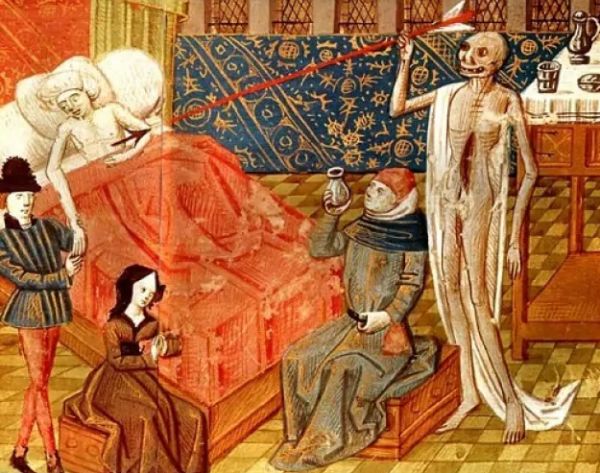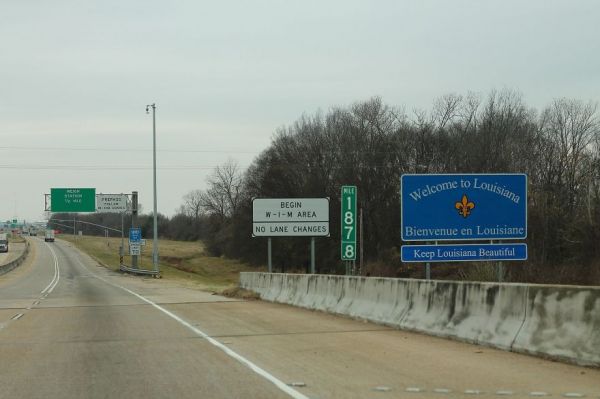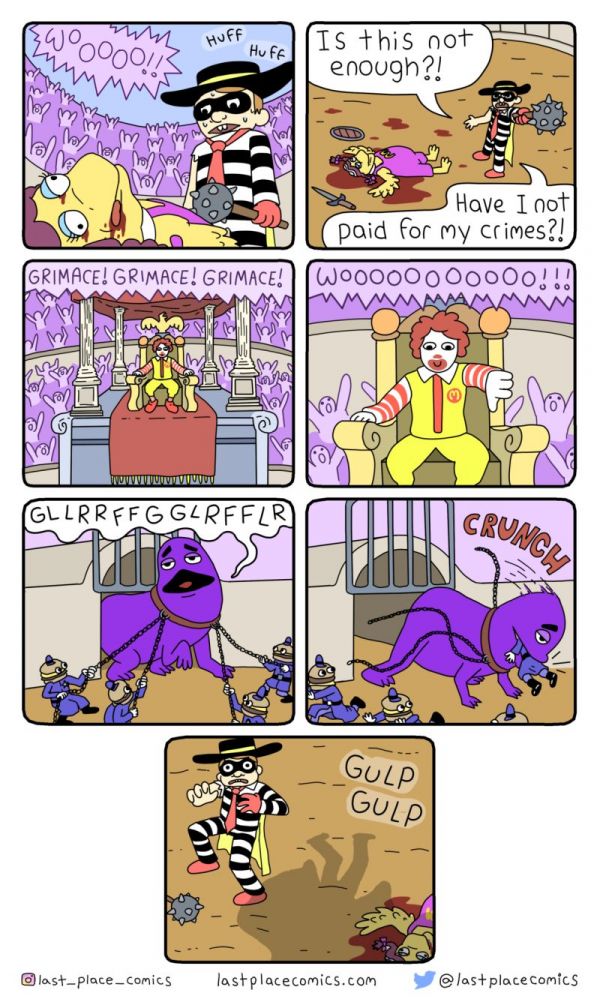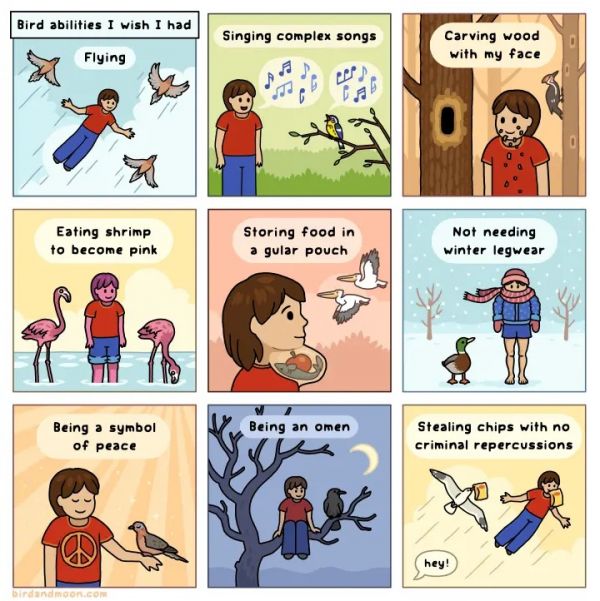Valerie Musser knows bearded dragons- she has five of them! She sometimes dresses them up and poses them in miniature kitchen scenes for fun, as you can see at Instagram.
Winny came as a rescue when she was abandoned in front of a pet shop. She may have been considered a defective dragon, as a veterinary workup determined she has muscular dystrophy. Not only that, but Winny was malnourished and full of eggs! Would she survive long enough to lay those eggs? Good food and loving care in her new home helped, but Musser still kept her fingers crossed. And Winny came through like a champ!
Even though all the bearded dragons are treated like royalty, Musser has made extra accommodations for Winny's health. At Facebook, you can follow Winny's progress and see how a bath mat helps her walk without sliding, and an improvised vibrating device helps her digestion. Winny has found the perfect family and is living each day to the fullest.

Some people find the 6-7 meme frustrating. My teenage children found it amusing until I started working it into every conversation that we had. Then they stopped using it. Victory!
The only way to defeat being ambushed by a youth meme is to charge into it and never let it go.
In-N-Out Burger disagrees. People magazine reports that the In-N-Out Burger restaurant chain, upset at people yelling 6-7 when number #67 would be called, remove it from the enumeration. The number that is called after Order 66 is number 68, thus disarming would-be memers among the customers present.
-via First We Feast | Photo: Wikimedia user Wgreaves

Black Death refers to a pandemic of bubonic plague that swept Europe in the mid 14th century, killing up to half the population. The disease, carried by fleas on rats, had been around for thousands of years, and the virulence of the pandemic of 1346-1353 is ascribed to high populations living in close confines during the medieval period. But how did it get to Europe?
New research shows that it was likely related to a volcanic eruption in 1345. We don't have historical records of such an eruption, but written accounts from Europe and Asia in the years following report dark clouds and crop failures. We know this can be caused by volcanic ash circling the earth. Also, Arctic and Antarctic ice cores have dated a layer of sulphur to around 1345. Tree ring data also shows the ash clouds' effect on climate in those years. The result was that Italy had to import massive amounts of grain from Central Asia to keep the population from starving, and that's where the Black Death began to flourish. Read how a volcanic eruption somewhere in the world led to the resetting of Europe at LiveScience. -via Strange Company
Actor, comedian, singer, and dancer Dick Van Dyke was born on December 13, 1925, which means he is turning 100 years old today. Van Dyke began his career in the military, then went on to radio and nightclubs, and became famous for his performance in the 1960 Broadway musical Bye Bye Birdie, for which he won a Tony Award. That got him the starring role in The Dick Van Dyke Show from 1961 to '66 -and three Emmy Awards. He was cast as the male lead in the 1964 movie Mary Poppins, which garnered Van Dyke global fame and a Grammy Award for his performance on the movie's soundtrack album. Those roles were followed by a series of movies and TV shows, and more work on Broadway. Van Dyke spent eight years starring in the TV series Diagnosis: Murder.
Other notable facts from Van Dyke's life include how he dropped out of high school to join the military as a pilot during World War II. He was rejected by the Army Air Force for being underweight until they accepted him as an entertainer. Van Dyke also wrote several books, including one for children based on his experience as a Sunday school teacher. There are other lesser-known facts about Dick Van Dyke's life and career you can read about here.

Truck drivers spent a lot of time on US highways, and they have the opportunity to leave reviews of those roads with organizations that crunch the numbers. The Overdrive Highway Report Card keeps track of the worst roads as ranked by truckers, and Trucker Path publishes rankings from truckers to share information about things like parking availability, truck stops, and fuel prices. The four worst ranked highways include two in Louisiana! They are lambasted for bad pavement, minimal maintenance, number of accidents, and congestion. Those are features that are of concern to all drivers.
The five best highway routes for truckers take into account industry-specific features like parking availability and truck stops, but they would not have been ranked so high if they didn't also have good pavement and fewer accidents. The number one best highway gets bonus points for also taking you to a string of famous monuments and attractions, which is a spoiler for those who have been there. Find out how the best and worst ranked highways in America got their reputations at Jalopnik.
(Image credit: formulanone)

Vinnie's is a pizzeria in the Williamsburg neighborhood in Brooklyn is famous for innovative pizza designs, such as pizzas topped with smaller pizzas and a pizza box that is itself made of pizzas. Its menu is always startling.
Most recently, the culinary wizards at Vinnie's have devised the ultimate comfort food pizza. What could be better to eat on a cold winter's day than tomato soup paired with grilled cheese sandwiches? Vinnie's proposes a pizza covered with that meal.
Gourmand and committed New Yorker Nicholas Heller visited and recorded this video of its production. The carefully prepared sandwiches are added halfway through the baking process so that the entire pie bonds together.
-via Born in Space

Deke Cameron is The Glass Clown, a stained glass artist in the Austin, Texas area. You can commission him to create windows and pieces so suit your own needs or consider purchasing one of his passion projects inspired by popular culture. Here, for example, is Swedish Chef, one of the finest cooks the Muppets ever produced.

You'd better pick up that mace, Hamburgler. You're need it!
Our anti-hero of the Ronald McDonaldland cinematic universe has been, at long last, called to account before the throne of Ronaldus McDonaldus.
But Ronaldus's hunger for blood far exceeds the contents of the veins of Birdy the Early Bird. He wants more suffering--enough to cover up the cheers of the crowds that he has corrupted through the daily sights in the PlayPlace.
The Hamburgler now must face the Grimace. Truth be told, he's too dangerous for the PlayPlace. That's why Officer Big Mac fled the city last week. He knows that eventually he'll end up in the belly of the Grimace as depicted by Last Place Comics.
Before you go to bed on Christmas Eve, don't forget to leave out milk and cookies as a treat for Santa Claus when he stops by! And maybe some carrots for his reindeer. You might get the idea that the jolly old elf will be so stuffed with cookies that he can't move by the time he ends his rounds, but no. Milk and cookies are pretty much an American custom. Families in other countries share their own traditional gifts for Santa.
In European countries, there's almost always an alcoholic drink left for Santa, as well as traditional sweets, except for a few places that leave letters for Santa instead. The further you go south, the heartier the food gets. Some countries in Africa leave a full filling meal of meat and seafood stew. Or barbecue. Remember, below the equator, Christmas comes in the middle of summer, and traditional treats often follow what's in season. Treats are left for livestock, too because Santa is pulled by animals that are not reindeer in many countries. See a roundup of traditional treats left for Santa Claus in nations around the world at Mental Floss.
We are often warned not to take health advice from just anyone on the internet, because there a lot of folks out there trying to make money from telling you how you are doing something wrong. That goes for sleep positions as much as anything else, and there is no shortage of "experts" who will tell you how to do it, whether they are really experts or not. So which is really the optimal position to sleep in? And can you train yourself to do it the "right" way?
First off, remember that humanity has managed to survive for hundreds of thousands of years without worrying about sleep positions. But according to science, the most optimal sleep position depends on who you are and the state of your current health. Even then, it's most likely only going to make a small difference. Dr. Rachel Salas, a neurologist who specializes in sleep medicine, explains the differences in sleep positions.
I ran into this "fun fact," and found it so absurd I just had to look it up. Far from debunking a funny meme, I found that the story of the 1901 book Makt myrkranna, or Powers of Darkness, was even stranger and more complicated than this. The Wikipedia entry on the book details how it differs from Bram Stoker's 1897 novel Dracula, despite its reputation as the direct translation. It was only in 2014 that a Dutch scholar noticed how different the two novels were.
But after Makt myrkranna was translated into English just a few years ago, it came to light that the source of the story wasn't Bram Stoker, or at least not directly. It was a Swedish story titled Mörkrets makter (Powers of Darkness) that was first published as a magazine serial in 1899-1900. The Swedish Powers of Darkness was somewhat closer to Dracula, and had been assumed to be based on Stoker's unpublished notes and early drafts. The story had been changed considerably from that of Dracula, and had a political slant. Still, the Icelandic "translation" by Valdimar Ásmundsson was much shorter, stylistically different, and had more emphasis on action and sex.
Scholars are still translating and studying each version to determine what the sources were, how Dracula changed so much, and why it took a hundred years for anyone to realize that the books told a different story.
Eight of the best mechanical minds in Japan collaborated to assemble the Great Ball Contraption at the 2025 Japan Brickfest. The goal is to design the most elegant and mesmerizing methods of moving tiny basketballs and soccer balls a few inches further down the line. The result is 49 LEGO modules that, when strung together, created a circle of the room more than 31 meters long!
The elements of this contraption include elevators using genius handoffs; robots that resemble birds, dinosaurs, and, uh, robots; and gear assemblies that look like some kind of voodoo is going on. There's even one sequence in which a ball must be thrown through a basketball basket to proceed. Don't miss the colorful valley, designed to be pretty and move impressively. You might also notice a domino machine that doesn't seem to have anything to do with moving the balls, but it's pretty clever anyway. -via The Awesomer
The Independent reports that 17 parachutists were preparing for a coordinated jump out of a Cessna Caravan flying out of the airport of Tully, Queensland, Australia.
One unlucky skydiver experienced a premature deployment of his reserve parachute, causing him to impact against a stabilizer with his legs and then get caught on that stabilizer by the parachute.
He then used a knife to cut the 11 ropes that connected him to the reserve chute and deploy his main parachute to successfully land on the ground.
The pilot, unaware of the problem, experienced difficulty controlling the plane as a result of the accident. He considered bailing out but was able to regain control of the craft and land it safely.
-via Colin Rugg

Neal Agarwal has given us plenty of games and web toys at Neal.Fun (previously at Neatorama), but this one takes a left turn into just plain fascinating. Size of Life is a slideshow that compares the size of living things on a scale from strands of DNA to to largest living thing on earth (you might already know what that is). Of course, not every living thing can be included, but there are some surprises along the way, like a jellyfish with tentacles that can grow 100 feet long, an extinct armadillo that was bigger than a bear, and an entire animal that's smaller than our white blood cells. Although I would argue if that orangutan stood up, it wouldn't fit between a crab and a penguin.
At the bottom right, there is a button that lets you compare the size of any two creatures in the show. However, if the difference is really big, you'll have to use an arrow button to see them both, and you may have to look really hard to see the smaller organism. -via kottke

Rosemary Marco is an artist and writer who communicates information about the natural world and the importance of preserving it. She's especially passionate about birds and would like to have their powers.
A gular pouch could be especially helpful during harsh winter months when food becomes scarce or during workplace meetings that drag on into my lunchbreak. Perhaps I could create an artificial one and wear it around my neck.




